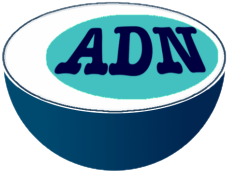Orateur
Summary
Understanding how three-dimensional (3D) genome organization influences gene expression is a challenge in genome biology. Chromatin conformation is regulated by intra- and inter-chromosomal interactions and by dynamic interactions of chromatin with nuclear lamins, at the nuclear periphery and in the nuclear interior [1-3]. Chromosome-chromosome interactions are also dynamic and under the influence of stochastic and regulated processes. These premises challenge the deconvolution of individual spatial association patterns from HiC and ChIP data aggregated from millions of cells. We report a new computational strategy to infer 3D chromatin structure based on integrated modeling of lamin-associated domains (LADs) mapped by ChIP-seq of A- and B-type lamins and 3D chromosomal interactions networks identified by high-resolution HiC. The premise of our modeling are a bead-on-a-string model with beads containing topologically-associated domains (TADs), with some TADs associated with A- or B-type lamins, and others not. The modeling framework includes a scoring function incorporating HiC, LAD and nucleus shape constraints, and a set of allowed chromosome moves. The sampling method relies on a computationally-efficient Metropolis Hastings Monte Carlo algorithm. Resulting 3D models respect the notion of chromosome territories. Our models enable an elucidation of the interplay between chromosomal interactions at the nuclear periphery and in the nuclear interior. We notably identify lamin-associated TADs constitutively associated with the nuclear periphery, TADs constitutively localized in the nuclear interior, and hyper-dynamic TADs with variable spatial positioning. Integration of multiple datasets with increasingly performant computation techniques [4] will be essential to underpin the complexity of spatial genome conformation in dynamic systems such as differentiating stem cells.
[1] Lund et al. 2013. Genome Res 23, 1580-1589
[2] Lund et al. 2015. Nucleus 6, 30-39
[3] Rønningen, Shah et al. 2015. Genome Res, PMD 26359231
[4] Paulsen et al. 2015. PLoS Comput Biol 11, e1004396

